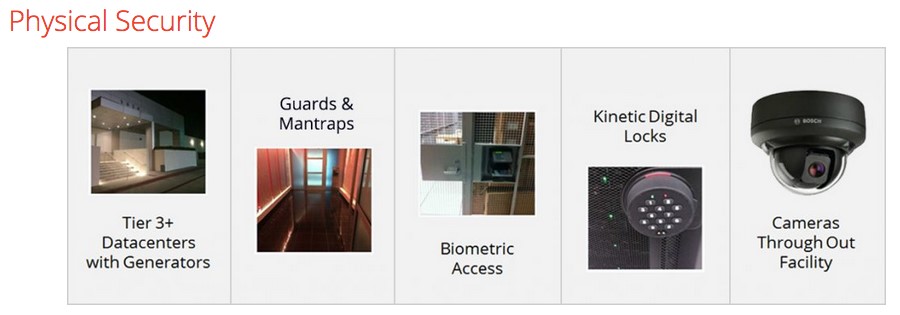Richard Branson recently wrote a blog that went viral where he shares his belief that the 9-5 lifestyle most American workers live will end in the next decade thanks to the advancements in technology. In it, Branson writes, “The idea of working five days a week with two day weekends and a few weeks of holiday each year has become ingrained in society. But it wasn’t always the case, and it won’t be in the future.”
The truth is, this is probably much closer to becoming a reality than the decade that Branson theorizes. Work-life balance is the key factor for millennials when evaluating a potential job offer. 88% of surveyed millennials want a work-life integration where work and life are indistinguishable. Even the United States Government is taking notice, with the passage of specific bills to encourage agencies to promote a workplace culture that includes flexibility. Yonder.io reports that as of 2017, 3.9 Million U.S. employees worked from home for at least half of their work hours and this represents a 115% increase since 2005.
Stephane Kasriel, the CEO of Upwork who works to match freelance professionals with the businesses that need their skills, recently stated on the findings of the Second Annual Future Workforce Report that, “Companies that refuse to support a remote workforce risk losing their best people and turning away tomorrow’s top talent.” With the unemployment rate at a 50-year low, according to Govtech.com, it is increasingly difficult for businesses to compete for top talent, and if potential employees are demanding a strong work-life integration, then businesses who do not have this benefit are going to lose the battle. But many businesses still struggle with the concept of a truly flexible workplace environment, largely in part because of these four concerns: lack of security, loss of productivity, lack of community and communication challenges. These challenges are easier to solve than many think, thanks to advances in technologies such as Desktop-as-a-Service, or DaaS, and here’s how:
DaaS is more secure than on-premise
It’s a long-held myth that having data or information in the cloud is less secure than housing it in an on-premise facility, and in the infancy of cloud solutions, this was true. But as the efficacy of the solution has grown, so has the clouds ability to secure the data that it is responsible for. The reality is that now cloud solutions, including cloud computing for business solutions like DaaS, are infinitely more secure than on-premise solutions. How?
David Linthicum, a cloud expert who regularly speaks about the benefits of cloud solutions, wrote in a blog on searchcloudcomputing.com that, “On-premises environment users experience an average of 61.4 attacks, while service provider environment customers averaged only 27.8. On-premises environment users also suffered significantly more brute force attacks compared to their counterparts.” The reason?
On-premise solutions are complex. The wide variety of access points (terminal, browser, workstation, etc.) and unreliability of the systems create multiple access points for hackers to breach. When on-premise solutions were developed, the key to security was to control the physical access to the data, but this is no longer the case. As enterprises have worked to add new features to their IT solutions, they often have tried to add cloud solutions on top of the premise solution, and according to Tripwire.com, this can actually increase the risk of breach.
Desktop-as-a-Service is more secure because the technology includes multiple layers of security. Things that are both physical (access control, large gates, cameras, etc.) to virtual (Firewalls, VPN, IP Filtering.)


DaaS increases efficiency and productivity
Another myth that pervades many businesses perspective on flexible and remote working strategies is the idea that employees who are not physically present must not be working. Unwashed, pajama-clad images of adults lounging around and napping on the couch abound when many think of coworkers working from home.

But research disproves this theory. Distractions such as the water cooler gossip, frequent interruptions from other visitors and loud noises from office mates become non-issues when a worker can control their environment. 86% of individuals surveyed by SurePayroll, a web-based payroll service provider, stated they could achieve maximum productivity by working alone and ⅔ of the managers surveyed say their employees who worked remotely increased their overall productivity.
Additionally, ConnectSolutions concluded in their study that remote work can actually lead to higher efficiency, with 30% of those surveyed saying they could accomplish more in less time when they worked outside of the office. A study on “The State of Remote Work” through a collaboration with TINYpulse and owl labs found that remote employees have a higher level of investment in their work and also benefit from the clearer boundaries and habits needed to be successful in a remote environment.
For businesses looking to enable a remote work strategy, DaaS is fundamental to giving your employees the tools they need to succeed in that environment. DaaS allows employees to access any and all of their data from any device, whether it is a desktop, laptop, tablet or mobile phone. The operating system is no longer a barrier. As long as the employee can access an internet connection, they can access their work files.

DaaS enables greater community and collaboration
One of the biggest objections opponents to the trend of remote work is that working remotely can decrease the ability of the employee to develop relationships with their co-workers. But Harvard Business Review reported that remote workers are often more engaged with colleagues and supervisors than those who work in the office. Another study concluded that “87% of remote workers feel more connected” thanks to the use of thanks to video conferencing.
All of that watercooler chat and impromptu meetings in the hallway can actually benefit a firm by enabling agility. While that may be true, what happens if an employee has to leave due to a sick child, or their own illness? Do you have a plan in place to stop the inevitable pause in productivity that is a result of an employee who, for whatever reason, can not make it physically to the office? DaaS does not just enable the remote work revolution but solves the challenge for those who are unable to travel to the office on that day.
Desktop-as-a-Service enables the Future of Work
A Gallup poll found that the number of workers who claimed to work from home or remotely for four or five days a week rose from 24% to 31% from between 2012 to 2016. And the report from Gallup on the “State of the American Workplace” stated that 43% of Americans report spending at least some time working remotely, which is up from 39% in 2012.
Desktop-as-a-Service (DaaS) is a disruptive technology that is reducing the complexity of delivering top-notch IT solutions in this rapidly changing business world. The benefits go beyond easily enabling the enhancement of your employee’s productivity and attracting top talent with the flexible work capabilities. We invite you to read “Making a Case for DaaS” and contact one of our cloud specialists to learn more about how you can take advantage of this highly disruptive technology.


